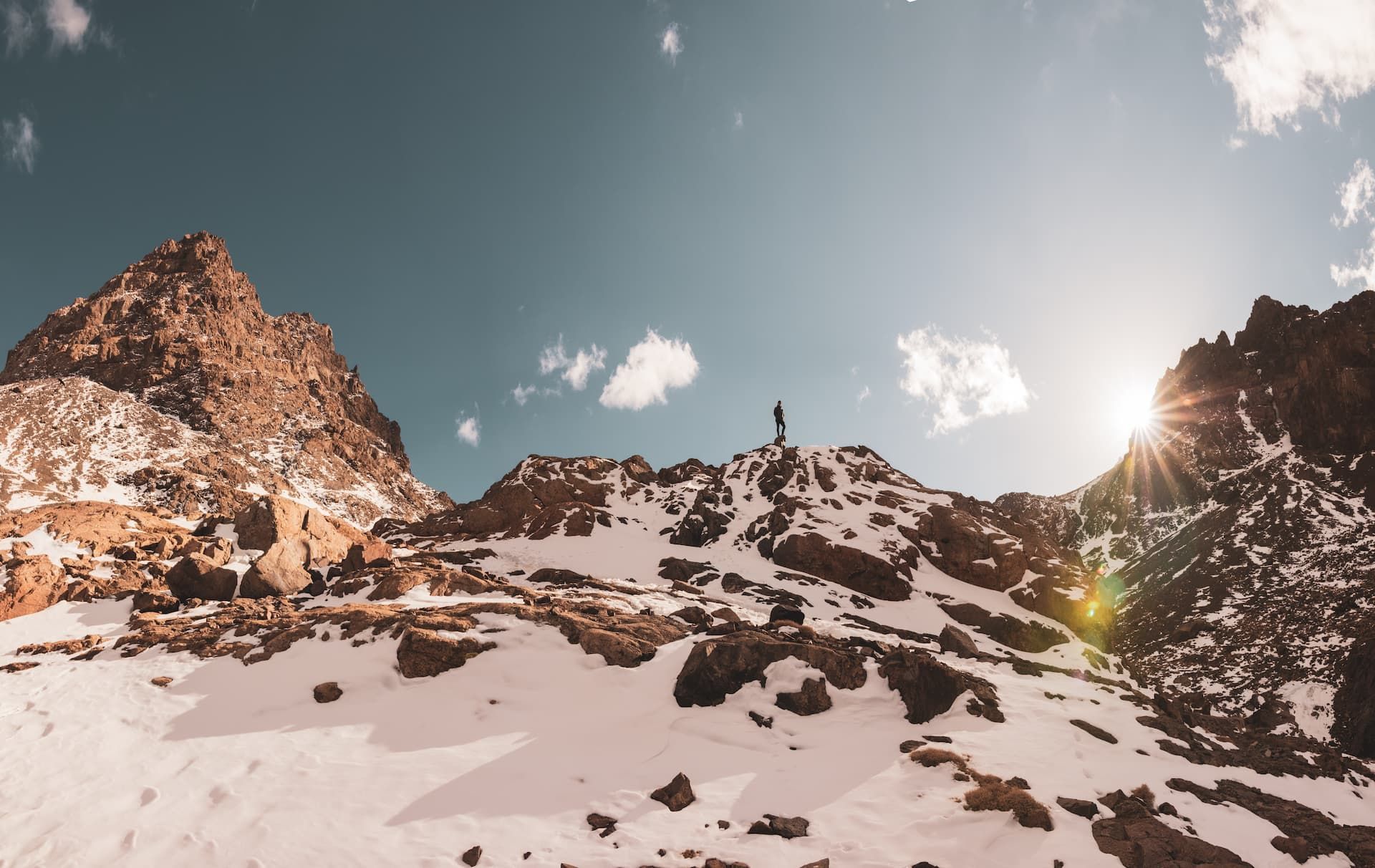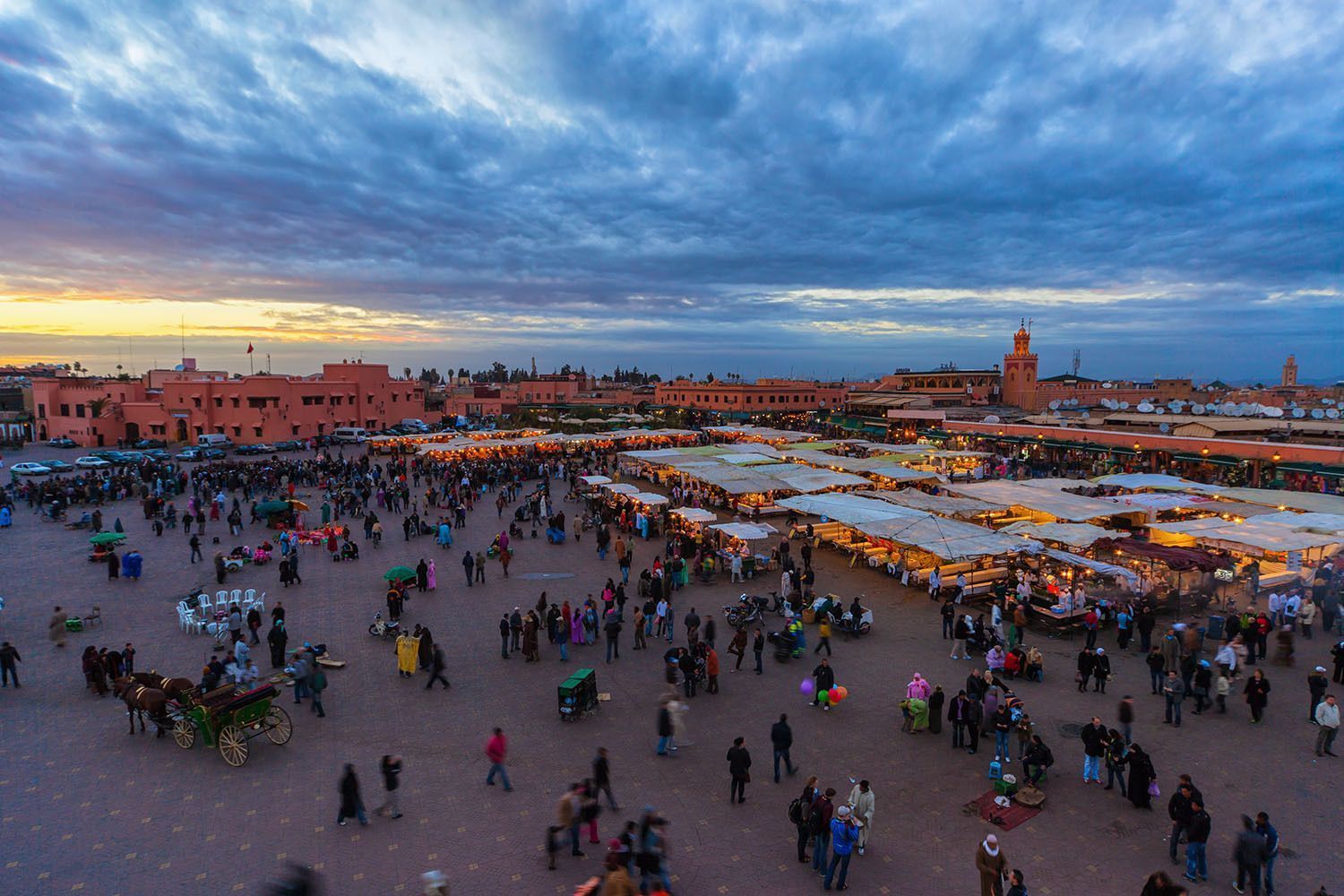
Morocco: ocean and desert, medinas and kasbahs
Discover all our trips
Our travels to Morocco
Morocco overlooks the Atlantic Ocean and for this reason it is a destination for passionate surfers, we will go as far as Essaouira! But its true charm lies in the Arab culture and history that is breathed in every corner. From the medinas of the north such as Fes and Tangiers, to the Kasbahs of the central area of the country. Unmissable stop: the Sahara desert where you can sleep in a tent camp and take a walk on the back of a dromedary.
Morocco: a thousand facets
Everything you need to know
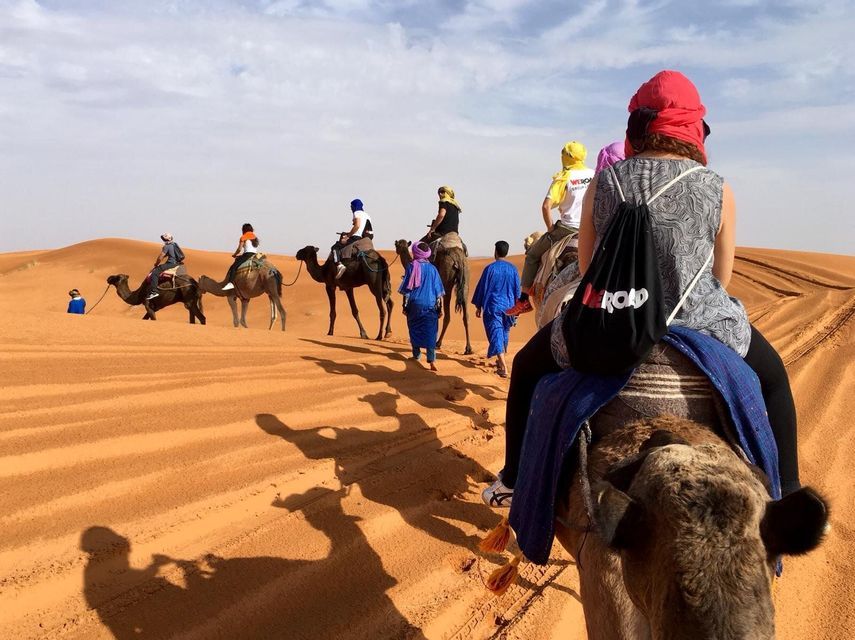
A nearby village to be discovered. Morocco overlooks the Atlantic Ocean and for this reason it is a destination for passionate surfers, a stop not to be missed is certainly the city of Essaouira! But its true charm lies in the Arab culture and history that can be breathed in every corner: from the medinas of the north such as Fes and Tangiers, to the Kasbahs in the central area of the country. Its markets smell of spices and essential oils and the colors of leather and silver handcrafted objects enliven them. For those who love a little adrenaline, there is the possibility of whizzing around the sand dunes on a quad or being transported by the oldest local means of transport: the dromedary. Moving to Merzouga, we arrive at the beginning of the largest desert in the world - the Sahara desert. Here we suggest you spend at least one night admiring the starry sky in a Berber tented camp.
When in Rome do as the Romans do
Morocco is a Muslim country, however, especially in major cities such as Marrakech, women are free to decide whether or not to wear the hijab; consequently, tourists are not required to wear particular clothing, it is only good costume and a sign of respect to avoid low necklines, uncovered shoulders or very short shorts. The religious aspect also affects the consumption of alcohol, which can be found in supermarkets and some restaurants and bars in larger cities, but in most cases it will not be easy to find on menus, especially in smaller cities. Now let's talk about negotiation: a real art. You will find shops with prices displayed, so they are fixed. Others without prices displayed, in this case you can negotiate. Let's say that a tourist is unlikely to be able to snatch an extremely advantageous price, but it's fun to get involved. If you know French, you're already halfway there; they are much more likely to bargain with Arabic or French speakers than English speakers. It's also easier to get a discount if you buy more than one piece. Normally it is possible to negotiate a discount between 10% and 20% less than the price they offer you, then it becomes all a question of skill. You won't be able to go home without a sheshe, the long Berber scarf that will come in handy in the desert, a small colored terracotta tajine, a spice or essential oil, a hand-decorated leather or metal object: the medinas are magical where scents and colors make you want to buy anything! The traditional Moroccan dwelling of the upper-middle class is the riad: a house with no windows on the outside, with a courtyard at its center, to always have a direct personal connection with Allah. They are decorated with geometric, floral motifs or graphic signs of the Arabic language and painted with soft colours, always decorated with flowers and perfumed with essential oils. Many have been transformed into accommodation facilities and we advise you to plan at least one night in one of these wonders.
Moroccan cuisine
Sharing and spices are two of the founding words of Moroccan cuisine. At home it is traditional to cook for everyone, then put the main dish in the center of the table and then everyone helps themselves - sometimes they eat with their hands, don't make that face which is the local custom and you will have fun doing it too in some traditional restaurant; in restaurants, on the other hand, you more often find the classic formula of everyone orders for themselves. But what do you eat in Morocco?
Tajine: in reality it is both the cooking method and the container itself. It is an earthenware dish with a lid in the shape of a cone, approximately, inside which chicken or lamb meat, vegetables and spices are placed and which is placed in an oven or on a stove to cook for hours, with a cooking that it is similar to that of steam. Therefore, on the menus you will find chicken and lemon tajine, lamb and mixed vegetable tajine, chicken, almond and honey tajine... in short, you will be able to taste an infinite number of tajine.
Couscous: another traditional dish that it cooks with a process similar to that of the tagine. Couscous is a cereal that is cooked by absorption, therefore not by boiling like pasta, but in a bowl, to each glass of couscous add a glass of hot water, mix everything until the water is absorbed from the cereal and so on until it is actually cooked. This too is then served in a variety of ways, from just vegetables to chicken and vegetables, which are the two most common versions. Alert cinnamon, in this dish it is used abundantly. Moroccan tea: a drink that is also a tradition. Seeing how Moroccan tea is prepared and served is like attending a real ritual. The tea leaves are mixed with various other perfumes such as cinnamon or saffron, but above all with the ingredient that characterizes it most of all: peppermint. In many places they will serve it to you right with fresh mint leaves in the glass. It should strictly be drunk hot, almost boiling - yes, even in summer - and the locals drink it very sugary, we are talking about a couple of sugar cubes in a glass; however, it is usually served without sugar to tourists, we are not used to such sweetness. The way it is served is fascinating: from the silver teapot into decorated glass glasses, raising the arm more and more so that the cascade of tea makes many bubbles in the glass to release all the aromas and create a lot of foam.
Kefta: literally "meatball ", you can find them in various ways, from skewers to tajine cooking with tomato sauce and scrambled egg. These are lamb meatballs, or a mixture of lamb and beef, spiced with the addition of coriander, cumin, turmeric and a little onion, delicious and delicious. The way the skewer is served is unique, real little swords could arrive on your plate.
Msemen: we can define them as flaky, square, unleavened crepes that are cooked on a plate or pan. They can be eaten with jam, therefore sweet, or with cheese to make them salty. In every medina you will find at least one lady who cooks them with skill, method and precision, if you are not tired of eating them for breakfast, we advise you to try them even like this, on the street: hot made on the spot, they have a completely different flavour.
What to pack
It will depend a lot on when you take this trip, the trick in any case is always to bring clothes of different weights and lengths to play with layers and dress onion. Compared to the list below, from November to February also bring an umbrella or a k-way. What to pack for a trip to Morocco?
- comfortable sports clothes, light colors
- comfortable shoes
- sunscreen
- sunglasses sun
- bathing suit
- microfiber beach towel
- flip flops
- hat
- thermal shirt / thermal trousers / woolen socks for the night in the desert in winter
- travel pharmacy
What to know
When planning your trip to Morocco it is important to know that cash payment is more common on the spot than by card, for this reason, calculate how much you plan to spend on the trip and once in the main cities such as Marrakech, Casablanca, Rabat, change the sum which you will need for the coming days in one of the many exchange offices in the city. We advise against changing them at the airport due to the high cost of commissions. In the most touristic places they also accept euros, but they will apply an unfavorable exchange rate to you, remember to try to haggle the price a bit even if negotiation isn't your thing. Always make sure you have bottled water with you, we are not used to the chemical composition of running water in Morocco, so if you want to avoid unpleasant tummy grumbles, it is better not to drink it: be careful when brushing your teeth and taking a shower - these are moments not to be underestimated! If you accidentally drink it…hopefully you didn't forget to pack the Imodium. If you visit Morocco during the Ramadan period, bear in mind that bars and restaurants may be closed during the day, especially in smaller towns, and that it is a good idea not to eat or drink in public between sunrise and sunset. They are small tricks that will allow you to enjoy your trip to the fullest, having the opportunity to share this special moment for an entire population. In the country it is customary to tip guides and drivers who accompany tourists to discover their country, do not forget to leave it, they will appreciate it very much. You will very often find stray cats and dogs around you, it is normal that they are tolerated by the population so much that they are part of the community.
Visa, SIM, cost of living: other useful info
Payments: the local currency is the dirham. On site it is more common to pay by cash than by card, make sure you bring enough cash for the whole trip. Cost of living: it is lower than in Italy. For meals, an average of €10/20 a day is spent if you eat street food or in typical places, while in restaurants the prices are similar to Italian restaurants. SIM card: at the airport you can buy a prepaid SIM in one of the many stands that you will find before the exit. Hotels usually have wifi for Whatsapp, Instagram, if you have to work we recommend making sure you stay in a facility with a stable wifi connection.
Visa: British nationals don’t need a visa to enter Morocco for the purpose of tourism for up to 3 months.
Electric sockets: the electricity in Morocco is 230V at 50Hz, the plugs are socket C; you can bring the universal adapter to be safe.
The climate throughout the year
The climate in Morocco varies greatly from the area in which it is located, mainly three macro-areas are recognised: the coast, the hinterland and the mountains. The Atlantic coast enjoys a mild and windy climate all year round, it remains an eternal spring weather, while the climate of the Mediterranean coast is rather similar but with a few more degrees. In the hinterland, where we find Marrakech, the summers are hot while the winters are cold, the temperature is pleasant in the change of season. In the mountains of the Atlas range, winters are harsh, so much so that it snows, while temperatures are hot in summer, but less so than in the inland area. In all areas, remember that there is a considerable daily temperature range. The temperatures below are relative to the Marrakech area.
What to see in Morocco? The 5 places not to be missed.
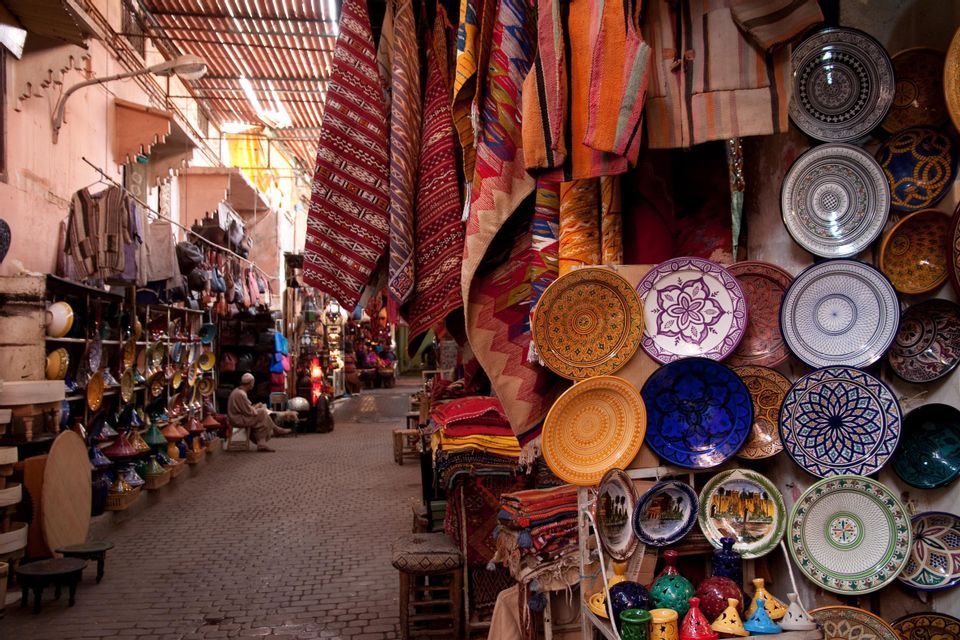
Marrakech
One of the former capitals of the country, it is a vibrant city. The medina is the ancient area, where you can stroll through the labyrinthine streets letting yourself be guided by the scents of spices and leather, by the colors of the lamps and fabrics and by the shouts of the merchants trying to attract your attention to their shop. The fulcrum of the medium is the Djemaa el Fna square, an open space surrounded by red buildings with terraced bars and shops which from early morning until late evening comes alive with stalls and itinerant vendors of all sorts: from snake charmers to carts of centrifuges fresh fruit. We advise you to take at least two days to go around it all, do some shopping and try typical dishes, you could also stay inside the walls in one of the many fairy-tale riads that have been transformed into hotels. The highlights of the city to visit are definitely: the El Bahia Palace, one of the Alawite-style royal residences and the Koutoubia Mosque with its imposing minaret. The city then expanded with a new and more western-style neighborhood where you can visit the famous Jardine Majorelle, the Islamic-style botanical garden created by Yves Saint Laurent.
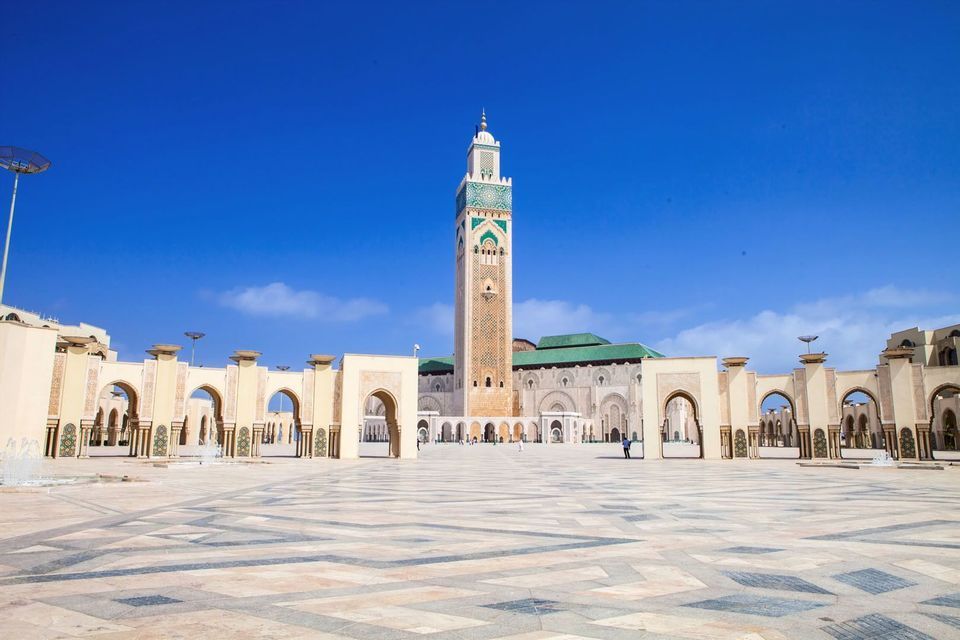
Casablanca
One of the newest cities in Morocco, built on a Berber city destroyed by an earthquake. Casablanca is today one of the major economic centers of the country, thanks to its port, given its position along the coast of the Atlantic Ocean, and to its recent development in an almost western style. Its name is indicative of its appearance: here the majority of buildings are painted white. In Casablanca you cannot miss: the monumental Hassan II Mosque with its minaret, the tallest in the world, which you can also visit internally, one of the few mosques in Morocco that non-Muslim faithful can visit; obviously its medina, even if it represents the remains of what survived the earthquake of the seventh century; La Corniche, the most fashionable area of Casablanca, a seafront with clubs, hotels and cafés for relaxing and having fun; the Mohammed V Square, its beating heart and the Royal Palace, which can only be visited externally but which is certainly worth a look.
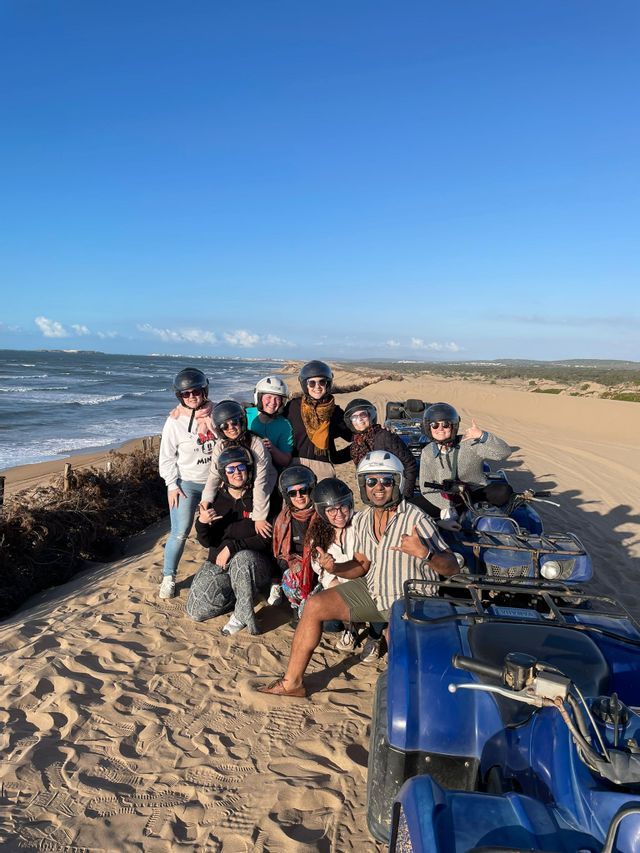
Essaouira
A small pearl bathed by the Atlantic Ocean, Essaouira will steal your heart. Its medina is lively and overwhelming, even here you won't be able to hold back the desire to buy some handicrafts, spices, fabrics, even fresh fish at the market to then be cooked in one of the "grill only" restaurants hidden in the alleys. We advise you to organize a guided tour to discover its history, the tradition of the port in constant ferment and how it has come to be one of the cities where life is best in all of Morocco. Just outside the walls of the medina we find the beach and the promenade along which hotels, kiosks and the new area of the city have sprung up. However, there is an area of unspoilt beach where local schools organize surfing lessons, horse riding, quad biking or camel rides. The natural spectacle here is guaranteed: amber sand dunes that protect a very wide shoreline on which the powerful ocean waves break. One of the most poetic and inspirational places you will be able to find in Morocco!
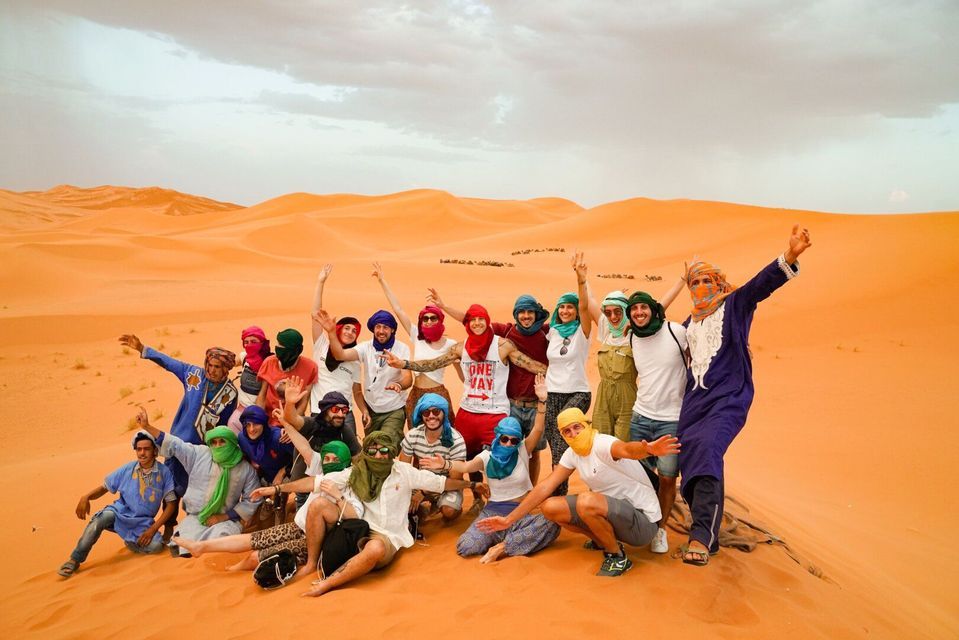
Sahara desert
Did you know that Morocco hosts only a very small part of the Sahara Desert? To start glimpsing the high golden sand dunes you will need to head to Merzouga in the southeast of the country. Here you will find an expanse of barren land and in the distance you will begin to see these towering hills on the horizon. Its vastness, the geometry of the shapes and the harmonious relationship that the Berbers have established with the desert leave you speechless. We recommend that you stay overnight in one of the nearby desert tented camps. In this way you will be able to admire both the sunset and the sunrise in the dunes, with the sun coloring them with shades never seen before. You will be able to get in touch with the Berbers, the nomadic people who with their dromedaries know the desert like the back of their hand and over the centuries have migrated from one country to another right through the desert, and be their guest while enjoying local food and perhaps playing bongos and singing along. Often they also offer the possibility of organizing a walk on dromedaries among the dunes or quad biking, certainly both experiences allow you to discover this desert with different eyes.
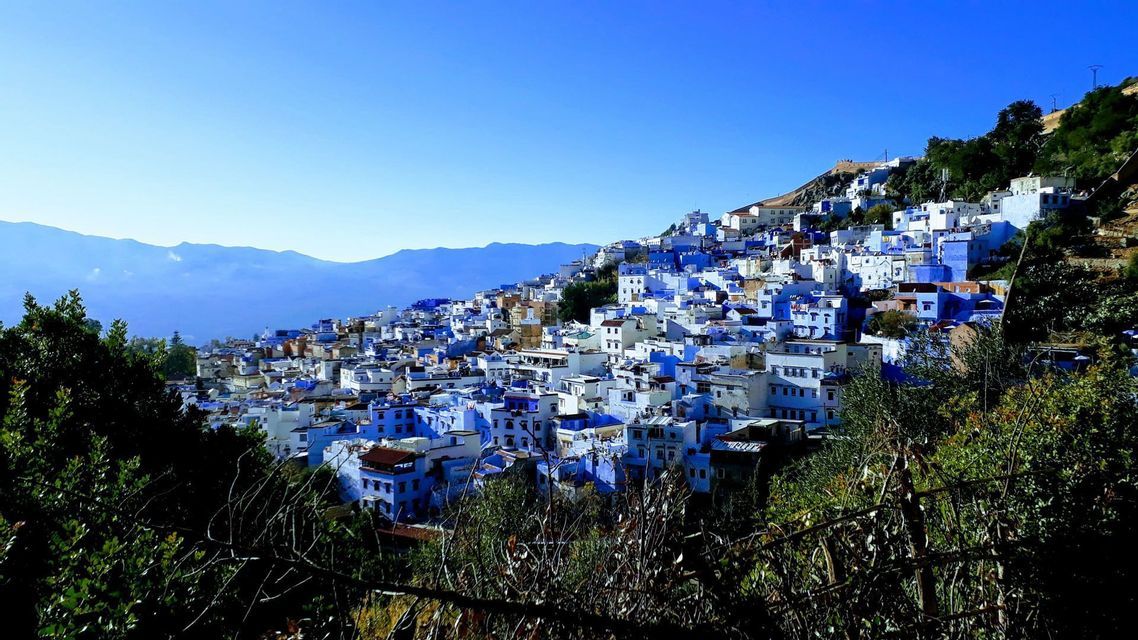
Chefchaouen
The blue city! Chefchaouen earned this name for the characteristic color of its houses, all painted in various shades of blue. How come? Theories differ: Blue is said to be a heat-repelling color, so it's a way to keep homes cooler during the hot summer months; it is said that it is a way to repel insects, because the natural pigment of indigo contains substances that annoy mosquitoes and so on; but it is also said that they were painted like this by Jews who fled the Spanish Inquisition. The fact is that the effect upon arrival is of a fairy-tale town, built in a gorge in the north of the town along a small stream. Like any Moroccan city, its hub is the medina, a maze of narrow streets lined with the shops of local merchants selling everything from groceries to clothes, leather goods to spices.
